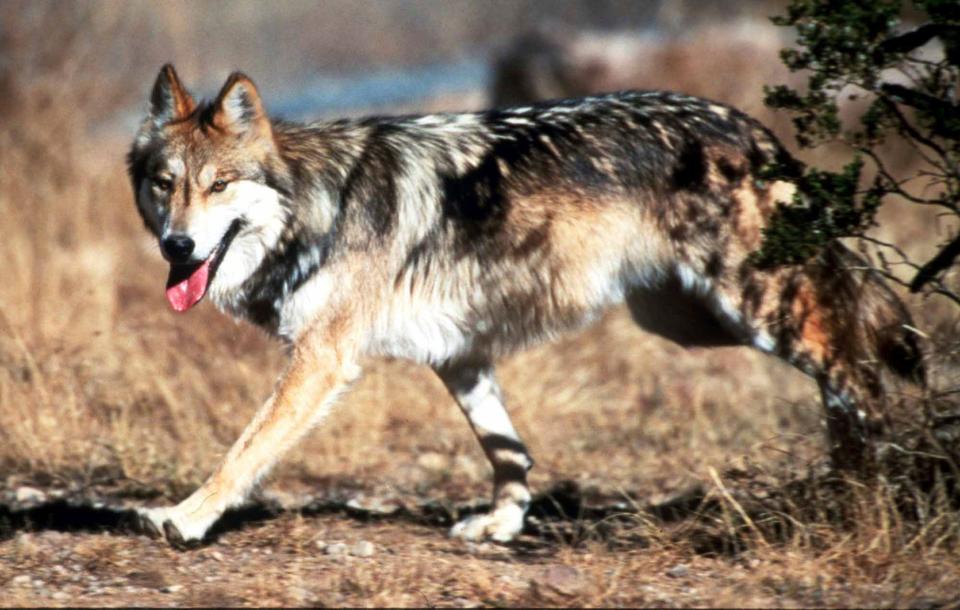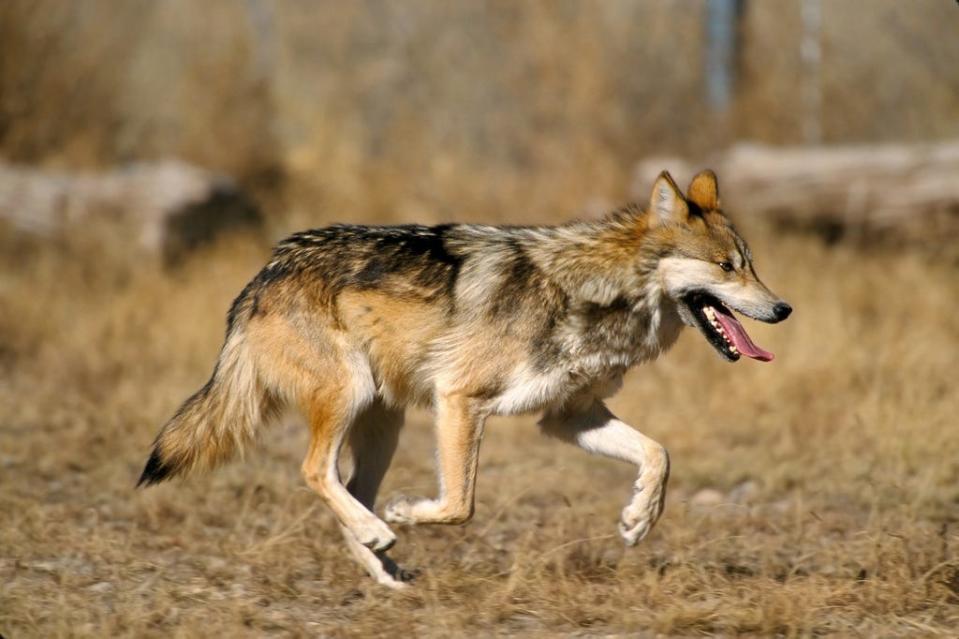Feds look to bring more Mexican wolves to New Mexico, ranchers for for livestock safety
New Mexico ranchers worried their livestock could be at risk after the federal government announced plans to increase the amount of Mexican gray wolves allowed to dwell in the state.
The wolf, listed as endangered in 1976, presently dwells in portions of southern New Mexico and eastern Arizona.
While the species was being recovered by the U.S. Fish and Wildlife Service, the agency previously capped the wolf’s population at 325.
But in an amendment proposed by the Service last week, that cap was removed, and the federal government said it intended to see the animal’s population grow to 320 or more by 2028.
Criticism from New Mexico ranchers, support from environmental groups
The move drew criticism from the New Mexico Livestock Bureau which argued more wolves could mean more threats to cattle and other livestock, thus potential damage to the state’s agriculture industry – a major economic driver.
“The Mexican grey wolf recovery plan continues to threaten and burden New Mexico’s ranchers,” said Bureau President Craig Ogden who owns a ranch in Loving. “Recent plan revisions issued by the US Fish and Wildlife Service, which remove population caps on the number of wolves in the state, make it more difficult for these ranchers to provide beef for fellow New Mexicans.”
More: Funds on the way for New Mexico's endangered species through US Senate bill, grants
Ogden said dangers from the wolves amid increased conservation efforts, coupled with market tensions, could create difficulty for New Mexico’s ranchers if the proposal was approved.
He said it was unfair for the federal government to continually adjust it population goals for the Mexican gray wolf, to the detriment of local ranchers.
“On a daily basis, ranching families contend with unpredictable weather, fluctuating markets and increasing regulations,” Ogden said “Now, the federal government is moving the recovery plan goal posts once again.
“Removing population limits allows a concentration of wolves that could totally decimate a herd and a rancher’s livelihood. Our state’s ranchers are being sacrificed to achieve an ever-changing goal with no real finish line in sight.”
More: New Mexico ranchers take on national environmental group over protections for rare bird

But the proposal was supported by environmental groups that argued the wolf’s population should be allowed to grow beyond 320, and that wolf killings intended to control their numbers were inhumane.
Michael Robinson with the Center for Biological Diversity contended the Fish and Wildlife Service should take another step to increase breeding and genetic diversity of the wolves.
The proposed rule called for 22 captive-born wolf pups to be released into the wild by 2030, and survive to the breeding age of two, but did not contain requirements that they breed.
More: Delay on federal protections for native southeast New Mexico flower prompts lawsuit
“It’s disappointing that the federal government still refuses to replenish the priceless genetic diversity lost through its own mismanagement of these wolves,” Robinson said. “Mexican gray wolves have won a reprieve from a planned massacre, but their hopes to find unrelated mates are being dashed at the same time.”
The Service was also criticized for its ongoing practice of releasing wolves born in captivity to join wild dens, a process known as “cross-fostering,” instead of breeding bonded wolves and releasing them together with their parents to increase their chances of survival and reproduction.

The future of Mexican wolves in New Mexico
The Center for Biological Diversity reported that of the 72 Mexican wolf pups released into the wild, only 13 were still alive today, and only four were known to have reproduced with just six offspring surviving.
More: Mountain butterfly in New Mexico could see federal protections from extinction
“Unless those cross-fostered wolves who survive to breeding age actually reproduce, those animals have zero impact on the wild gene pool,” said Maggie Howell, executive director of the Wolf Conservation Center.
In its proposal, the Fish and Wildlife Service contended its revised objectives would mean a “90 percent likelihood” of the wolf’s survival for the next 100 years within the Mexican Wolf Experimental Population Area (MWEPA), spanning the two states.
“When the MWEPA population achieves the population and genetic objectives, the population will simultaneously achieve the recovery criteria established in the revised recovery plan for a population of Mexican wolves in the United States, providing a significant contribution to the long-term conservation and recovery of the Mexican wolf,” read the proposal.
Chris Smith, southwest wildlife advocate with Santa Fe-based WildEarth Guardians said the federal government must focus on genetic diversity, as opposed to mere releases into the wild and short-term population growth, to protect the wolf in the long-term.
“These wolves need real genetic rescue, access to more habitat, and an essential designation,” he said. “This rule — while a fractional improvement on the prior attempt — still fails lobos.”
The new rule was in response to a federal court order in 2018 calling for reforms to the Fish and Wildlife Service’s recovery plan for the wolf, which required the agency to finalize its new rules by July 1.
Adrian Hedden can be reached at 575-628-5516, achedden@currentargus.com or @AdrianHedden on Twitter.
This article originally appeared on Carlsbad Current-Argus: Feds look to bring more Mexican wolves to New Mexico

